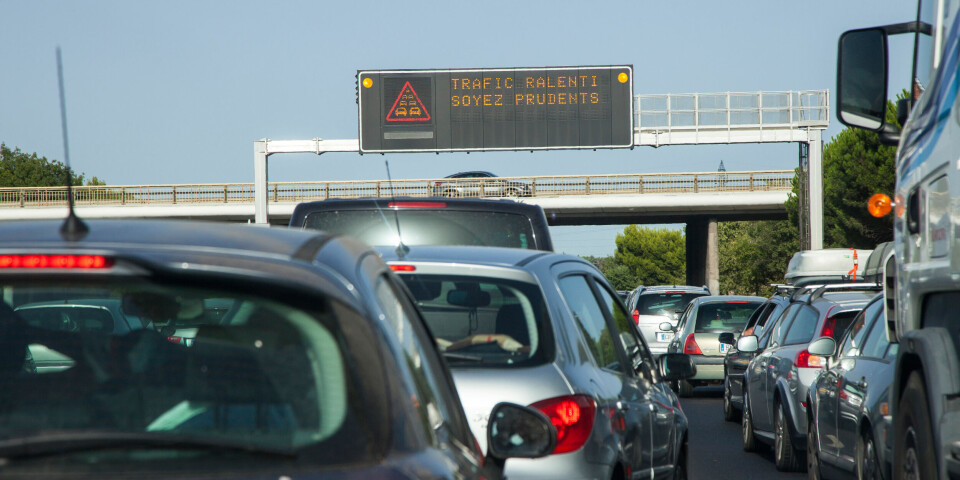-
France responds to EU’s proposed solutions to inheritance law ‘problem’
However wait continues for couples affected as officials consider further follow-up
-
Hérault red flood alert after 300mm of rain hits southern France
Several roads and public areas closed in Montpellier due to flooding
-
UK retirees win government pension charges victory in France
Successful campaign by foreign residents should bring relief to hundreds of public sector pensioners
Osteopaths in France defend treatment safety – ‘no link to strokes’
Doctors question the safety of osteopathy after patients suffer strokes following neck manipulation – osteopath body calls claims ‘ignorant’

Osteopaths have defended their profession after doctors claimed some patients whose necks had been manipulated later suffered strokes.
Doc Amine, who was called out by SOS Médecins, said he had a patient who suffered damage to the artery which supplies oxygen to the brain, causing a stroke, shortly after an osteopath manipulated her neck.
“Osteopathy has no scientific proof behind it, unlike kinesitherapy,” he wrote on Twitter.
Several doctors came out in support of his claims.
Millions visit osteopaths in France
It is the latest of many criticisms aimed at osteopaths from medical professionals and comes as figures show there are 35 million osteopath consultations in France a year, meaning nearly half the population has had treatment. Some have more than one visit in a year.
There were 36,861 registered osteopaths in December 2021.
Read more: Make sense of… Physiotherapists (kiné) and osteopaths in France
‘Osteopathic treatment as safe as seeing doctor’
Christophe Couturaud, president of the Registre des Ostéopathes de France trade body, told The Connexion: “Medicine in France is very narrowly focused on the doctor and hospital model, and nearly all the state’s resources are poured into that.
“It is not surprising that some doctors make ignorant and badly informed statements like the ones we have heard.”
Mr Couturaud said that in the cases that provoked the tweets, no link could be established between strokes suffered by patients and their treatment.
“Osteopathic treatment can go wrong – the figures show people can be hurt in one in a million cases.
“This compares, though, with widely practised medical acts carried out by doctors, such as infusing cortisone into joints, where the risk of things going wrong is one in 10,000 procedures.”
Five years of training
Osteopaths were only recognised in France in 2002, and it took until 2014 for all the decrees associated with the law which set out who can call themselves an osteopath and what training they need to be published.
The rules require five years of training at one of 31 state-approved institutions.
No government grants are given to people training to be osteopaths and courses cost around €9,000 a year.
After receiving their diplomas – there are no degrees because the courses are not run by the state – the osteopaths have to be registered with a local agence régionale de santé (ARS) and have a health professional number from the ARS to practise.
Consultations are not reimbursed by the state, although most mutuelle health insurance plans pay part of the fee for some sessions a year.
Read more: Explainer: French healthcare terms that are useful to know
Difference between osteopathy and kinesitherapy
Most people who see an osteopath in France do so because they have back pain.
Medical doctors are forbidden from prescribing osteopathy treatment in France – but doctors are not banned from being osteopaths themselves.
Around 5% of the 35,000 practising osteopaths operate both as doctors in the state health service and as osteopaths outside it.
Kinesitherapy in France, by contrast, cannot be practised without a doctor’s prescription.
The kiné profession grew out of ‘medical gymnastics’ developed after World War One to help treat wounded soldiers, and has similarities with the physiotherapy used in Britain.
Kinétherapists must have a degree and be registered with the ARS.
Around 31% of osteopaths are also practising kinétherapists.
“In general, the difference is that a kiné will have a prescription from a doctor or surgeon to treat a shoulder after an operation, for example, and will treat the shoulder, while an osteopath will not have a prescription from a doctor and as well as knowing how to treat bone and joint problems, will have a global view of the patient’s health.
“The principle of osteopathy is to find the problem, remove the obstacle, and let nature carry out the cure.
“People sometimes come to us with problems which need modern medical help, with some infections for example, and we send them to doctors to be treated.”
Supervising body needed
Mr Couturaud said more needs to be done to professionalise osteopathy in France, in particular the creation of a supervising body with the power to sanction people for malpractice, as is found in the UK and some other countries.
Such a body would be able to act quickly against people who claim to be osteopaths but who do not have diplomas or registration.
Two or three cases a year are reported to the Registre des Ostéopathes de France, which then has to go to prosecutors for legal action to be taken.
As well as kinés and osteopaths, rural areas in France have a tradition of rabatteurs, similar to the bonesetters who used to be found in the English countryside.
They manipulate the joints and bones of both people and animals but do not have any formal training and operate entirely outside the law.
There are also the magnetisers – similar to faith healers – who are sometimes found in the countryside.
Online appointment platform Doctolib recently confirmed that it will remove more than 5,700 ‘unconventional’ medical practitioners from its site, including ‘wellbeing’ specialists, such as naturopaths, sophrologists and hypnotherapists.
Read more: French health site Doctolib to ban unregulated wellbeing practitioners
Related articles
Help guide - Healthcare in France
Will my UK physiotherapist’s degree be recognised for work in France?
French naturopaths rebut criticism after Doctolib website controversy
























